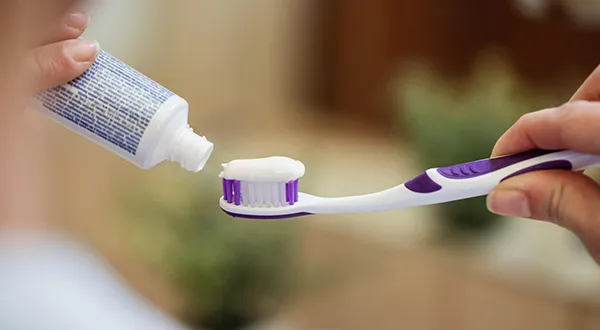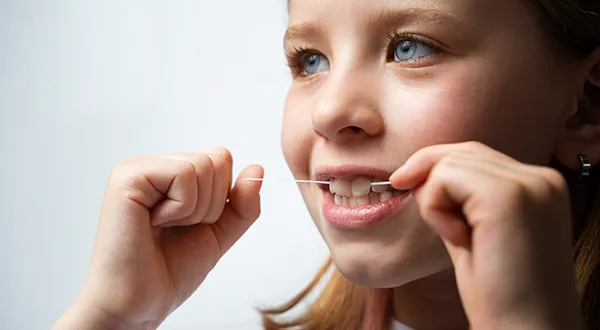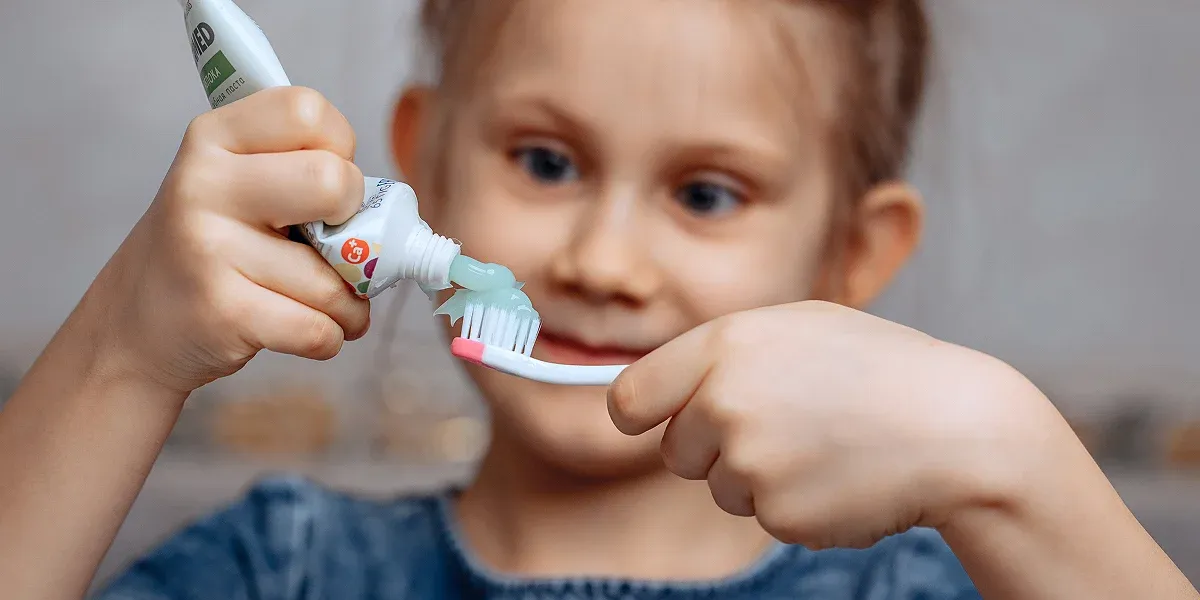
Choosing the Right Dental Products for Children
Guidance on selecting age-appropriate toothpaste, toothbrushes, and other dental products for kids
Choosing dental products for children with consideration is essential for optimal oral health. Children may have specific dental concerns such as sensitivity, gum disease, or a history of cavities. Selecting products that address these concerns can help manage and prevent issues. Dental needs vary between children. Age-appropriate products ensure the formulation and features are suitable for the specific developmental stage, making dental care more effective and safer.
Choosing the right fluoride level ensures adequate protection without fluorosis or ingestion concerns. Dental products that are easy to use, such as toothbrushes with comfortable grips or flavored toothpaste for children, increase the likelihood of consistent use.
Children with sensitive gums may experience irritation from certain dental products. Choosing toothbrushes with soft bristles or alcohol-free mouthwash helps prevent discomfort and encourages regular use. Pediatric dental care involves more than just brushing teeth. Flossing, tongue cleaning, and using mouthwash contribute to comprehensive care.
Selecting a range of products that address different aspects of oral hygiene ensures a well-rounded approach. Some children may have allergies or sensitivities to certain ingredients in dental products. Checking ingredient lists and choosing hypoallergenic alternatives helps prevent adverse reactions. Consideration should extend to the affordability and accessibility of dental products. Ensuring that selected products are sustainable in the long term promotes consistent oral care practices.
Pediatric dentists can provide personalized recommendations based on a child's oral health status, medical history, and specific needs. Following their advice ensures a tailored approach to dental care. Let's explore dental care essentials for kids, focusing on selecting age-appropriate dental products for them. It will help you make informed choices for your child in consultation with the dentist. So, let's get started.
“Choosing the right dental products for children is like giving them the keys to a lifetime of healthy smiles.”
The Best Dental Products for a Bright Smile
Selecting the appropriate dental products for children is paramount in instilling positive oral hygiene practices from a young age. Here is a user-friendly guide to assist you in making well-informed choices.
Age-Appropriate Toothpaste
Choosing the right toothpaste for your child involves thoughtful consideration of their age, developmental stage, and specific dental needs.
For infants (0-2 years), clean their gums with a soft, damp cloth or gauze before teeth erupt. Once the first teeth emerge, a smear of fluoride-free toothpaste, roughly the size of a grain of rice, is appropriate.
As toddlers (2-4 years) develop, encourage them to spit out excess toothpaste after brushing while understanding some swallowing may occur. Only a pea-sized amount of fluoride toothpaste is safe to swallow.
Preschoolers (4-6 years) should continue learning to spit out excess toothpaste while using a pea-sized amount of fluoride toothpaste. Monitoring their brushing technique is essential.

Early school-age children (6-8 years) should have the importance of spitting out toothpaste reinforced, though some swallowing may persist. Continue with a pea-sized amount of fluoride toothpaste and encourage independence in brushing.
As pre-teens (8-12 years) become proficient at spitting out toothpaste, maintain the use of a pea-sized amount of fluoride toothpaste.
Introducing options with flavors preferred by older children may make the experience more enjoyable. For teens and beyond (12+ years), emphasize the importance of regular brushing, flossing, and oral care independence. Ensure the toothpaste contains fluoride for cavity prevention and enamel strengthening. Fluoride, regarded as "the toothpaste superhero," can reduce cavities by up to 25%.
Toothbrush Selection
When selecting a toothbrush for your child, choose one with soft bristles. Ensure the toothbrush is the right size for your child's age. Smaller brushes with oversized handles are more accessible for little hands to grip. Utilize a soft-bristled, small-headed infant toothbrush for babies aged 0-2 years. Additionally, considering a toothbrush designed for gentle placement on the gums before the appearance of teeth can aid in cleaning and massaging.
As toddlers (2-4 years) develop their motor skills, opt for a small-sized toothbrush with a thick handle for easy gripping, featuring soft bristles to protect sensitive gums. Fun colors or characters can make brushing more engaging for this age group.
Moving into the preschool years (4-6 years), continue with a small-sized toothbrush, but consider one with a slightly larger head. Introduce electric toothbrushes with child-friendly features like timers to make brushing enjoyable, reinforcing the importance of oral care positively.
Early school-age children (6-8 years) can gradually opt for a toothbrush with a slightly larger head and a more extended handle.
As pre-teens (8-12 years) enter a significant growth phase, use a toothbrush with a medium-sized head and a more extended handle to accommodate the developing mouth. Introduce toothbrushes with specialized features, such as bristle designs, for better cleaning.
Emphasize consistent oral care habits and stress the importance of regular dental check-ups. Opt for an adult-sized toothbrush for teens and beyond (12+ years) as the jaw and mouth grow. Choose a toothbrush with features that address specific needs, such as braces or orthodontic appliances, and reinforce good oral hygiene practices, including regular brushing, flossing, and dental check-ups.
Flossing Tools
Regular flossing lowers the risk of gum disease by 33% in children. Flossing into a child's oral care routine is pivotal for optimal dental health. Introducing flossing is recommended for preschoolers aged 2-5 years as soon as adjacent teeth touch. Initially, parents or caregivers should assist with flossing, emphasizing the importance of gentle movements. Kid-friendly floss, typically about 18 inches long, or floss sticks can be more manageable for small hands.

As children progress into the early school-age range (6-8 years), encouragement of independence in flossing becomes essential. Parents can teach proper flossing techniques, emphasizing reaching all surfaces between teeth. Traditional floss or floss picks are suitable at this stage, and a gradual transition to regular floss can enhance oral health. For pre-teens and teens (9+ years), it is crucial to reinforce the significance of regular flossing as a fundamental part of their daily oral care routine.
Mouthwash
Selecting an age-appropriate mouthwash for children is crucial for their safety and oral hygiene. Use fluoride-free or low-fluoride mouthwash for children under six to prevent dental fluorosis. For those aged six and above, choose fluoride mouthwash with lower concentrations. Opt for alcohol-free formulas to avoid discomfort and accidental ingestion, especially in younger children. Look for child-friendly flavors to make the experience enjoyable and encourage regular use.
"Children who use fluoride mouthwash as part of their routine have shown a 20% decrease in cavities compared to those who don't".
Supervise and educate your child on proper mouthwash usage, ensuring they understand not to swallow it. Consult a dentist before introducing mouthwash, and teach your child to swish and spit, emphasizing that it's not a substitute for brushing and flossing. Adhere to recommended usage instructions to avoid adverse effects. Remember, dental care for children should focus on prevention, with mouthwash being one component of a comprehensive oral hygiene routine. Tailor choices based on age, specific needs, and guidance from the dentist.
Final Thoughts
Regular check-ups for your child and advice from a dentist on dental products are crucial. Dentists can suggest brands based on your child's dental health. Involve your child in decision-making for an engaging experience and good oral health.
Contact your kids' dentist in Stockton, Dr. Sajjad Rizvi, D.D.S., at Happy Kids Dental to learn more about choosing the right dental products for children.
Resource:
*This media/content or any other on this website does not prescribe, recommend, or prevent any treatment or procedure. Therefore, we highly recommend that you get the advice of a qualified dentist or other medical practitioners regarding your specific dental condition*
Subscribe To Our Newsletter
Get Updates And Learn From The Best


